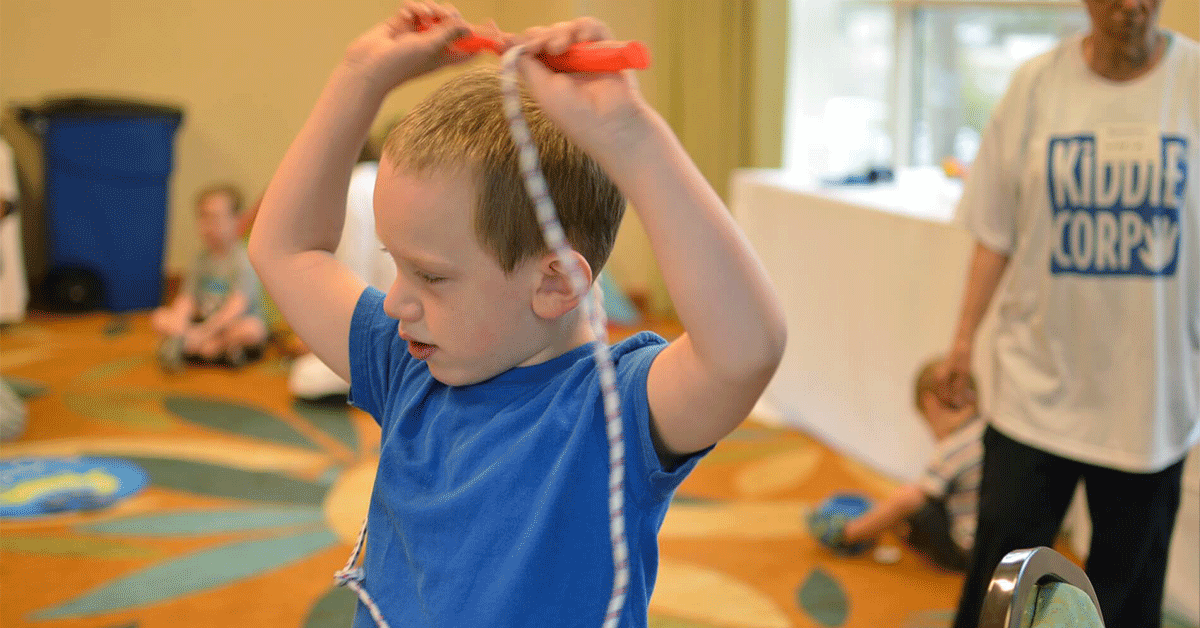A while ago, a parent of two children with Fragile X syndrome (FXS) suggested that I write about how individuals with FXS remove themselves from stimulating situations in order to allow for time alone, and about the self-preservation that flows from it.
Coincidentally, shortly after I received the request I attended a family wedding where I had three days to observe the behavior of a family member named Tim who has FXS. As you can imagine, all of the festivities made things rather hectic. Even though Tim enjoyed most of the wedding weekend, we frequently found ourselves asking, “Where’s Tim?”
After looking around, we would find him in a bedroom watching Wheel of Fortune or an old sitcom, happy as a clam. What was behind his retreat? Was it his need for a break from the noise and chaos, happy though it was, in order to regroup and calm himself? Invariably, he would emerge comforted and relaxed.
Recognizing the Signs of Hyperarousal
This is a common occurrence. The fact that people with FXS can self-advocate in this way is compelling. The process of recognizing when one’s own sensory system can no longer tolerate a certain level of input is called regulation. It is a skill that we actively teach younger children with FXS. The process of teaching the child how to recognize the signs of hyperarousal can take a long time. Tracy Stackhouse, a leading pediatric occupational therapist specializing in FXS, often designs programs to teach regulation. Most of the work comes from teaching the child to recognize when they’re overwhelmed and then to apply strategies to deal with those needs.
It is not at all uncommon for these individuals to go through a “now you see me, now you don’t” staging. The person with FXS may be the life of the party, expending a great deal of energy to be so, and then suddenly disappears without bravado or attention drawn to themself. The disappearance might last three minutes or half an hour, as if the individual knows exactly how long they need to get centered before returning.
When this process is prematurely interrupted, the outcome can be very negative.
Sometimes, when the person with FXS removes themself from an activity that is arousing and in many ways exciting, the caregiver feels obliged to engage them in order to ensure their continued participation. In these instances, the caregiver’s need to include the person with FXS trumps the preference that the person is communicating: to simply be alone for a while. As this interchange becomes more direct and confrontational, the person with FXS becomes increasingly resolute and oppositional, and a negative outcome often results.
Understanding the Behavior of Self-Removal
When the person with FXS is younger and less capable of self-regulation, loud noises and busy environments often cause behavioral excesses, aggression, and noncompliance. The function (purpose) of the behavior is to show protest and discomfort. The child soon learns that when they demonstrate aberrant behaviors that simply cannot be ignored, the adults remove him from the situation. The result is the same as the practice of self-removal, but the means to achieving that end is less than optimal. When the person is able to remove themself independently, of their own accord and on their own terms, the result is much more rewarding for all parties.
As has been discussed in prior columns, behavior can often be misunderstood and punished because the parent or caregiver does not recognize its function. Looking behind the behavior to what the child is attempting to communicate and achieve is paramount to successful programming.
The decision of a person to remove themself from a difficult situation in order to avoid a negative outcome is remarkably self-actualizing. In the interest of self-preservation, the child with FXS is able to avoid an embarrassing experience, and thus gain a healthy measure of independence. It is a skill, like all skills, that benefits from the continued practice that is encouraged by the significant adults in a child’s life.
The next time your child attempts to avoid an overstimulating activity, remember that they just may be attempting to regulate their reaction before they become so hyperaroused they can’t properly control their behavior. There will be time to desensitize this reaction while providing appropriate supports in the future. Allowing them to express protest in an adaptive way can become a measure of independence and a foundation on which other skills can be built.






